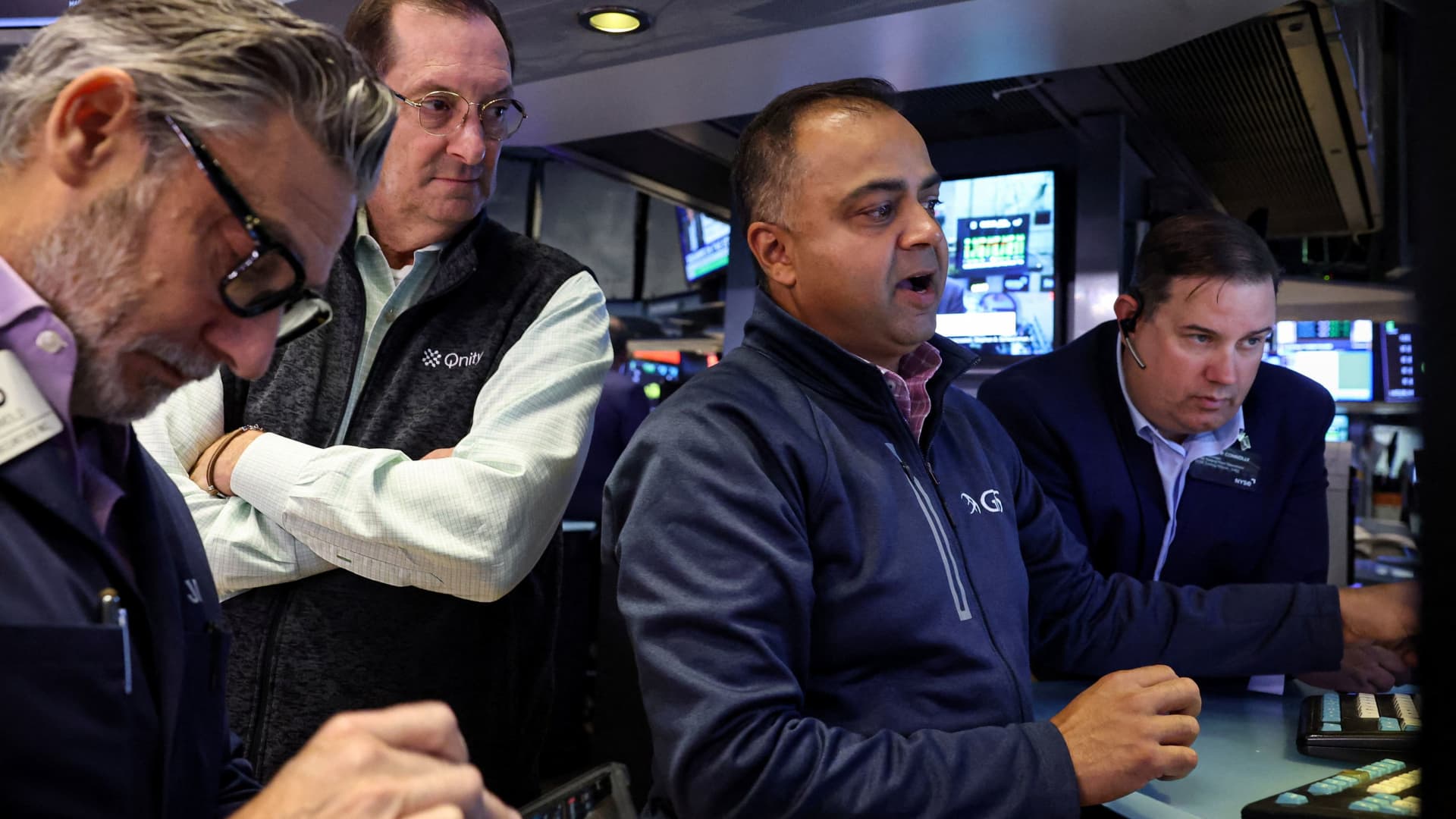(These are the market notes on today’s action by Mike Santoli, CNBC’s Senior Markets Commentator.) Rotate, rinse, repeat. The market followed Monday’s narrow, tech-dominant pop with an interlude of non-tech/defensive leadership to complete the job of erasing last week’s S & P 500 loss and preserve the index’s position within about 1% of a record high. Market breadth was 2:1 in favor of advancing stocks on the NYSE even with the S & P 500 ahead by a mere quarter-percent or so. Semiconductors were down 2% as Nvidia gave back half of Monday’s near-6% jump and traders sold the news on AMD ‘s effusively upbeat investor day commentary. Is Nvidia under a bit of pressure due to the overblown news that Softbank shed its tiny stake in the AI-infrastructure leader? For the sake of the market’s credibility, one hopes not. Softbank sold 32 million shares for $5.8 billion last quarter; NVDA trades an average 180 million shares a day and just yesterday added $264 billion in market value. Softbank had missed the multi-year Nvidia ramp and the position was never going to grow from here to be very material to it, given its need to fund its daunting AI commitments. Healthcare continues to assert itself as the key comeback group of the past several months. The S & P 500 Health Care Sector ETF finally clicked to a new year-to-date high as of Tuesday, eclipsing its first-quarter peak. A combination of achievable earnings estimates, the passing of peak regulatory risk on drug prices, demographic tailwinds and under-owned big-cap sector leaders explain the revival and are for now enough to overcome doubts about the government’s ACA subsidies. Even with this upswing, the sector as a whole remains near a 20-year low in forward P/E relative to the S & P 500. In case valuation is still viewed as a relevant input these days. More broadly, the defensive low-volatility stocks were firmer on the day, absorbing some spillback from the high-beta ramp on Monday. It’s probably unwise to infer much of a macroeconomic message from this defensive turn — it’s far more likely the market’s own homeostatic rebalancing at work (short-term traders take profits in the mega-caps but money doesn’t wish to leave the market entirely). The cash-traded Treasury market was closed for Veterans Day , but Treasury futures rallied a bit (implying lower yields) after the ADP private-sector payroll report suggested net job losses over the past few weeks. Not entirely a surprise but it reflects an uncertain moment for the underlying pace of growth outside of tech and high-end consumption. The equal-weighted consumer discretionary sector is up small today but remains 6.5% off its high and has a good deal to prove from here. Big picture, over the past month the S & P 500 had a quick drop of barely 3% on an intraday basis, which was quickly bought, arguably cutting short the reset/pullback process. Then three weeks later there was a 4% retreat to an intraday low, bought even more quickly. Here we have cycle-high valuations and a mature AI bull thesis coming under interrogation, working against the brute force of rising earnings estimates and the ubiquitously cited year-end seasonal tailwinds. Overall market breadth has been so-so at best. There were almost as many new 52-week lows on Nasdaq as 52-week highs. The “Is AI in a destructive bubble?” debate will simply be a feature of this market from here, with no satisfying answers likely for a long time to come, as will an unending flow of AI hype and eye-watering capex totals. For a market just barely off a record high and up 16.5% YTD, one could argue there is a somewhat higher wall of worry than might be expected. But that doesn’t mean the wall is all that high.
Santoli’s Tuesday market wrap-up: Non-tech/defensives take leadership role
